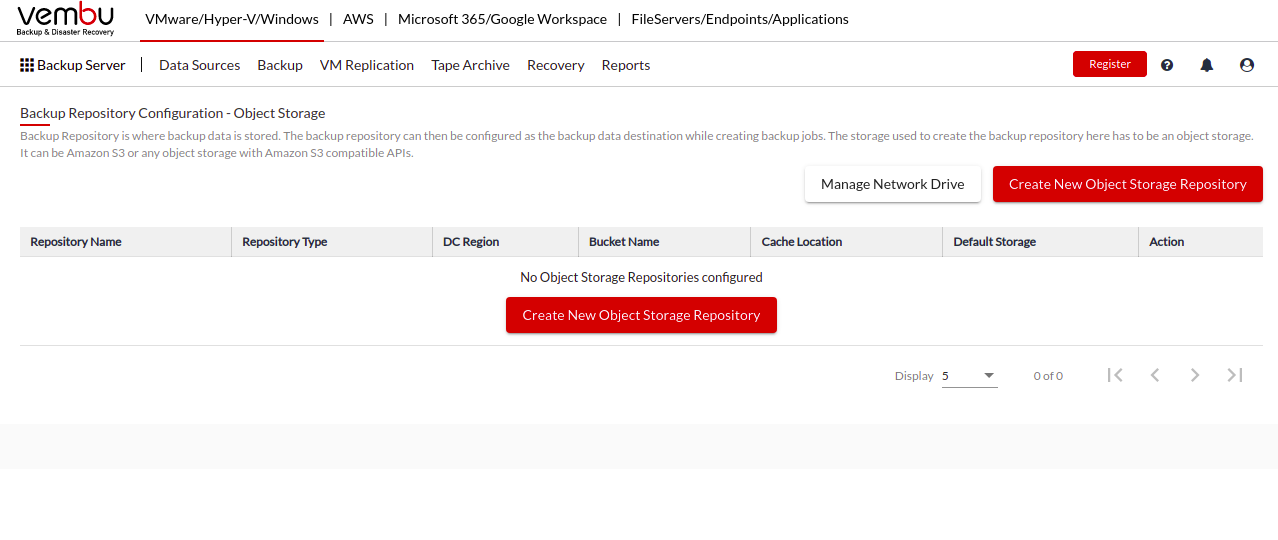Object Storage
A Backup Repository is where backup data is stored. The backup repository can then be configured as the backup data destination while creating backup jobs. The storage used to create the backup repository here has to be object storage. It can be Amazon S3 or any object storage with Amazon S3 compatible APIs.

|
There are a few limitations to be aware of when using the object storage repository as a primary storage target. Those restrictions are listed below.
- Offsite replication is not supported for backup jobs that stored the primary backup data in the Object Storage repository.
- The integrity check feature will not be supported for those backups stored in the Object Storage repository.
- The restore types such as Instant Boot VM, Disk Mount, and Microsoft Application item-level recoveries are not supported for image-level backup jobs (VMware/HyperV/Microsoft Windows) configured with an Object Storage repository.
- The tape archival is not supported if the primary backup data is stored in the Object Storage repository.
So, choosing the object storage repository as the primary storage target is entirely based on the RPO and RTO required. If you just want to store backup data for a longer period of time and do not require frequent or quicker recovery, then you can choose to store the backup data directly on Object Storage(AWS S3).
If your RPO and RTO are more stringent, it is advised to keep the primary backup data on block storage targets in your first site for instant recoveries and archive an additional copy of the backup data on object storage for long-term archival or disaster recovery purposes, either using the backup copy feature or Offsite DR.
|
